|
|
Post by wtrfwlr on Sept 6, 2012 16:59:40 GMT -7
It looks like the thread has gone past the "Rut" and into alot of other aspects of hunting tips which is great. And what a good topic to start thanks to MMark! I'll add some here if I may.
All the replies have been spot-on which I think is cool because we all seem to be hunting in completely different regions of North America but we all have the same objective...what is the best way to bag a Whitetail Deer.
I'd like to share some things about the Whitetail that may help and may be new to some of the newer Deer hunters or members that are thinking of becoming Deer hunters and maybe a hunting tip that veterans may not have thought of. Three of the things covered or pertain so far include a deers three main senses, these are, smell, hearing and sight. Those are listed in accordance of their strength to a deer
Smell-
The greatest strength a deer has. It is used for everything, from avoiding predators to finding mates, locating one another and setting up house so to speak. A deer's sense of smell tells it all sorts of things and as many of us know they will know we are in the woods way before we know where they are at. A deer can not only tell what odor it smells but how old that smell is and if they have ever smelled that one odor before and when. A deer can tell if a wolf or hunter or mountain lion walked down a trail recently or days before, which is important to his survival and they have relied on this since they were fawns. Deer have unique ways of improving their ability to smell. One way that many of us have seen is they will constantly lick their nose. This does two things, one is it allows scents to adhere to the surface of the nose so that they can tell just what that odor is. Another is by licking the nose pad it constantly wipes the slate clean for the next odor. This action also allows the deer to sort of taste what the odor is. I always wondered why they constantly did this until I learned what the purpose was.
Bucks have a unique form of identifying odors by what is known as Flehmen. A buck will curl their upper lip back and that exposes two pores located in the mouth area and allows air to enter where it is further analyzed. This is especially important during the rut since it is can tell a buck whether or not a doe is in estrus or not so that he doesn't waste time or energy chasing one that is not ready to accept breeding. This is called "Vomolfaction"
Since this is their strong suit this is what needs the hunters most attention. Our scent control and wind direction is extremely important. As was stated earlier I'm not sure one could ever become "scent free" enough to fool a deer's nose? I've had plenty of deer walk within mere feet of me but that was only when the wind was in my favor and I was careful about being clean or free of as much odor as I could.
I bowhunt so I strive to have deer within mere feet of me if I can. Wind direction is the easiest and cheapest way to fool deer. If I have a promising spot for a hunt I may have a tree stand almost yards from another just so I can hunt the wind. Listen to the weather, know your area down to the lay of the land on where to set-up at. Is there a front coming? Which way does the wind normally blow? Mine is predominately from the South during deer season but that can change with any front. Are you in a valley where it can swirl around during the morning warm-up or the evening cool-down?
Staying clean and clothes is a biggie. You can drive yourself crazy trying to keep all odors off of yourself! I hear all sorts of stuff like never go around a gas station and never eat fried foods or bacon? Well that is just not worth going on a hunting trip if I can't have bacon and eggs in the morning! Here are some of the things that I do, do. I have hunting clothes and camp clothes. My hunting clothes are in a trash bag that has a cheesecloth bag of dirt and leaves in it, I don't wear them around camp or even at the campfire, these are the clothes I 'hunt' in. This goes for footwear and hats too. When I bathe I use non-scent soap and I wash my clothes in baking soda on the hot cycle and hang outside to dry. This is for everything such as socks, underwear and facemasks.
I'm not a big fan of cover scents or any of the estrus doe pee deals. I am just not sold on the fact that they can tell when a doe is in cycle and still market to the demand when a female deer is only in estrus only 24-48 hours a couple times a year. Cover Scents? I have that covered with the earth smell and I can always rub some pine pitch on me or put some fresh crushed acorns in my pockets to help cover me if needed. Again it is mostly for me cause they are hard to trick! Don't get me wrong if this works or has worked for you, great, these are only my thoughts and experiences throughout my hunting days.
I have gone on too long again. I hope this helps and adds something to a hunt maybe. I'll be back to add some thoughts on deers hearing and a deer's eyesight and camo.
|
|
|
|
Post by woodyz on Sept 7, 2012 17:55:24 GMT -7
There are four main areas of concern I consider important when hunting deer. Location, scent, date/rut and the moon. Location: You have to be where the deer are to see any. Find a location deer are likely to be, they like water ways, swamps, creeks, rivers. They make trails that they follow, but they also mark their trails with rubs and tracks. Deer use rubbing on a tree as a sign post. It says here I am to other deer, they leave scent on their rubs. Rubs will be between a bedding area and a feeding area, but very seldom do the use the same trail going both ways. Rubs will be on one side of the trees in a line on the trail. If you were to go into the woods on a bright moon night and look at a trail where you found rubs you can actually see a lighter area on the trees, just as if you had painted a white spot on it. Once a buck deer starts to loose his velvet he will make rubs to remove it faster. Not all rubs made to remove velvet follow a food or bedding trail. Some will and some will not. What these rubs will tell you is the size of the deer, smaller deer make smaller rubs on smaller trees. They also prefer to rub specific tree types in different areas. The most popular tree type in areas I have hunted is ceder. Like I said they leave scent with their rubs so don't touch them or bother them any any way, you may cause the deer to avoid that rub and location. They leave tracks. The size of the track will tell you how big the deer is. And the track will tell you if a deer is male or female. Bucks step in the front track with their back. Buck tracks have a dot behind each separate hoof print from their dew claws. Does don't have dew claws and they don't step into their own track. The more tracks the more deer and/or deer activity. Start looking at water sources, walk the edge of rivers, streams, or ponds and lakes. When you find tracks at the water the deer will actually stand with their front feet in the water. Follow the tracks backward to find a trail. Consider where the food source or bedding area should be from where you find the tracks. Once you find a trail don't walk on it but with it until you find where it goes into a thick bedding area or out to a feeding area. Bucks will have a staging area just inside the woods next to a feeding area, doe not so much. A buck wants to look and scent over the feeding area before he leaves the woods. He will typically use the same staging area. When you hunt you need to make sure the wind blows from the staging area toward you. Also if you can hunt the staging area without getting into it you will catch those bucks who are nocturnal or night time only feeders while it is still light or just as it gets light. Except during the rut when they are just stupid. Some bucks will not even eat during the rut, but they will still be at a feeding area because that is where the does will be. If you can find does, find their bedding and feeding areas and the bucks will come to you. Bucks do not bed with does except during the rut. Once you know there are deer where you want to hunt pick three or four places to hunt from, pick the locations first for the wind, second for the bedding, feeding or staging area and third for the trail or a water/fence crossing or a pinch point. Deer can jump a six foot fence but they are lazy and will go where a fence is gone or down first. I have made pinch points by moving brush (wear gloves) erecting a barrier, etc. I have even left a piece of clothing with my scent on it at the trail I wasn't going to hunt to get a deer to circle my scent and come to where I really was. Scent: Scent is one of deer's most important senses. Deer use scent to find their way, to identify other deer (not just as deer), but as a known local, as a stranger, as a male and as a female. They use scent to find food, water and a mate. And they use scent to identify danger.rut and moon phase. I stay as scent free as possible. I have actually seen people dressed in their hunting clothes, including boots, pumping gas before going into the woods. My hunting cloths and my boots never come out of their scent proof bag until I am out of my truck at the location I intend to hunt. I never wear my hunting clothes except in the woods and I never wear my civilian clothes into the woods. Besides staying scent free (they make unscented shampoo) I also use a cover scent like raccoon or fox. Use the spray and spray your boots before you start into your hunting area. Before I forget my clothing bag contains dirt and tree parts from the area I am going to hunt. That is what my clothes smell like, dirt and trees. Using something like a 35mm film can or pill bottle, stuff cotton into them and spray the cotton with the coon or fox scent. As you get close to where you intend to hunt open the containers and place them so the wind blows over them away from where you will be. Walk into the area with the wind in your face. Deer scent in a bottle only works a specific times of the year, using it at the wrong time is as bad as pumping gas in your hunting clothes. And never put deer scent on you boots or on your clothes. If you use it sit it out like you would the coon or fox so the wind blows from you to it. The deer are doing different things at different times of the year, so when you hunt makes where and how you hunt important. Deer are not influenced by the weather, as in cold or hot, wet or dry. It is the hours of day light that move them. As fall goes into winter the days and thereby the light is less and they will move around more. During the rut, the bucks will just be stupid and no longer follow a trail or pattern. Does are tired and run ragged and not taking the time to stop and smell and watch like they do the rest of the year. Therefore they move around more. Again, if you are where the does are the bucks will come to you. Now the moon. The moon is the biggest over looked secret in deer hunting in my opinion. And other than the harvest moon, which will start the most movement of deer day and night. I don't mean a bright moon or full moon or no moon. I mean where the moon is in its orbit around the earth. Two times in the moons orbit it is straight over head and two times it is straight under you. Those are the four most active times for a deer. Plan your hunting time, your in the woods time around those four periods. Two of them are in the dark and not legal  so it leaves you two times of day to plan your hunt around. Stronger when its overhead, less so when its underfoot. There are other factors that come into it as well. Deer don't like the wind at all but when it is more than 20MPH they don't move, because they can't use scent and they can't hear. Also the direction of the wind will have some bearing on their movement. NE, E, SE if its cloudy the will feed, in light rain/snow they will bed or be moving between bed and feed. When the fog is out they will be out somewhere. NW, W or SW and the will fed when its cloudy, feed in light rain or snow and be moving in the fog. Now that means that is what to expect given the position of the moon. Any time after the harvest moon use the moon position first, a falling or rising barometric situation second and the wind third. That's my $.02 |
|
|
|
Post by woodyz on Sept 7, 2012 18:26:16 GMT -7
As an example this deer was rubbing a six inch dia. ceder, plus he had a scrape near the rub, plus he liked to cross a creek at the same place every time due to crossing a road when he came off a ridge where is night time bedding area was. His pinch point. The morning I shot him it was foggy, I was in a ground blind where my shooting area was between his creek crossing and scrape. Due to the fog I couldn't see to hunt the creek. Despite being in my scent proof ground blind two hours early, in my scent proof clothes and being down wind, I think he made me. But he rattled a loose stone when he crossed the creek and when he didn't come up over the little rise between me and the creek within the next few minutes, I knew he was going around away from me. He wasn't going to pause at the creek because he was visible from the road. But if he went around me he had another pinch point. He had to either jump the fence while he was on a hill (they can and will but don't want to jump downward) or he could come off the hill and into a draw where the fence was down. Due to the fog I had about a 45 second window where I would be able to see him. Once he didn't top the rise after rattling the rock that was the only place I was looking and my .243 was already aimed right there, propped on a set of shooting sticks so I broke his neck with my shot. But he was a smart old cuss and in that same 45 seconds I think he some how knew he was had because he had already started to jump down the hill when I killed him. I add this because even with a broken neck he still ended up rolling down the danged hill forcing me to have to drag him back up it.  He weighed close to 200# gutted. 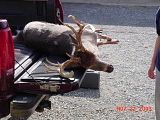 Just to show you what I mean about track size and dew claws. 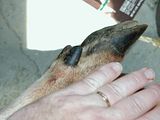 |
|
|
|
Post by wtrfwlr on Sept 8, 2012 17:23:22 GMT -7
Bucks and Does both have dew claws. You will more often see the imprint of the dew claws in a Bucks track since they are usually heavier than Does but you can also be fooled by a Does track looking like a buck if the soil is soft or it is a older Doe that is large. And older does ankles will break down slightly allowing for the dew claw imprints to be more visible in their tracks. 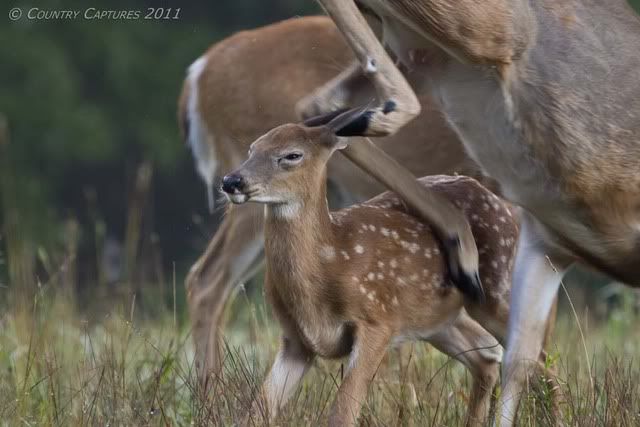 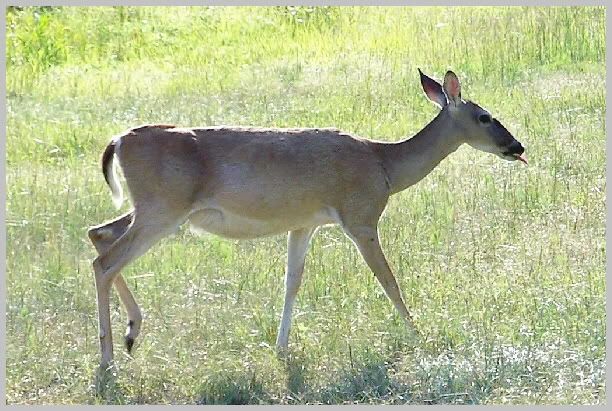 |
|
|
|
Post by woodyz on Sept 8, 2012 18:17:48 GMT -7
Agreed! I said it wrong, you will see the dew claws at a buck track and not the doe, except in mud. But the size of the track is still a factor. Although I did kill one doe with a 3 inch track. She weighed 150# and had worn her teeth to the gum line.
|
|
|
|
Post by mountainmark on Sept 9, 2012 9:02:55 GMT -7
Woodzy- could you possibly explain more about the moon? I'm interested in when exactly these times are. Thanks! BJ- Good info! I never knew why they licked their nose  Looking forward to the next instalment! |
|
|
|
Post by wtrfwlr on Sept 9, 2012 9:45:48 GMT -7
Glad you are liking it. The next one will be on eyesight and then glands. If I can get to the woods and the temps stay down I'm thinking on adding a video that will go a bit more into scrapes and rubs. At least that's what I would like to do?  ? Good excuse to go to the woods anyways huh! |
|
|
|
Post by woodyz on Sept 9, 2012 13:12:46 GMT -7
Where the moon is within its orbit depends on where you are. This site should help you chart it by your zip code. www.alfredny.biz/sportsmen/solunar-moon-phase-chart.htm I had always hunted by the barometric pressure and the time of year, but started using the moon as well in the late nineties and had good luck with it. |
|
|
|
Post by wtrfwlr on Sept 9, 2012 13:46:15 GMT -7
That is an excellent way to make sure you are in prime areas by using both the Solunar position and the barometer woodyz. Many GPS units have a solunar feature built in that will give you the major and minors for the exact area you are in. Another feature on mine that I like is the exact time for sunrise and sunset. This is especially important during Duck Season for legal shooting hours.
|
|
|
|
Post by woodyz on Sept 9, 2012 14:30:52 GMT -7
9/9/2012
Sun Data
Rise: 7:06 AM
Set: 7:41 PM
Day Length
12 hrs. 35 mins.
Moon Data
Rise: 12:47 AM
Set: 3:12 PM
Overhead: 8:01 AM
Underfoot: 8:26 PM
Moon Phase
39%
Waning
Crescent
Major Times
8:01 AM - 10:01 AM
8:26 PM - 10:26 PM
Minor Times
12:47 AM - 1:47 AM
3:12 PM - 4:12 PM
Solunar Rating
Average++
explanation
Current
Time Zone
Offset
UTC: -4 9/10/2012
Sun Data
Rise: 7:07 AM
Set: 7:39 PM
Day Length
12 hrs. 32 mins.
Moon Data
Rise: 1:40 AM
Set: 3:56 PM
Overhead: 8:50 AM
Underfoot: 9:15 PM
Moon Phase
30%
Waning
Crescent
Major Times
8:50 AM - 10:50 AM
9:15 PM - 11:15 PM
Minor Times
1:40 AM - 2:40 AM
3:56 PM - 4:56 PM
Solunar Rating
Average
explanation
Current
Time Zone
Offset
UTC: -4 9/11/2012
Sun Data
Rise: 7:07 AM
Set: 7:38 PM
Day Length
12 hrs. 31 mins.
Moon Data
Rise: 2:35 AM
Set: 4:37 PM
Overhead: 9:40 AM
Underfoot: 10:04 PM
Moon Phase
21%
Waning
Crescent
Major Times
9:40 AM - 11:40 AM
10:04 PM - 12:04 AM
Minor Times
2:35 AM - 3:35 AM
4:37 PM - 5:37 PM
Solunar Rating
Average
explanation
Current
Time Zone
Offset
UTC: -4 9/12/2012
Sun Data
Rise: 7:08 AM
Set: 7:36 PM
Day Length
12 hrs. 28 mins.
Moon Data
Rise: 3:33 AM
Set: 5:16 PM
Overhead: 10:29 AM
Underfoot: 10:53 PM
Moon Phase
14%
Waning
Crescent
Major Times
10:29 AM - 12:29 PM
10:53 PM - 12:53 AM
Minor Times
3:33 AM - 4:33 AM
5:16 PM - 6:16 PM
Solunar Rating
Average
explanation
Current
Time Zone
Offset
UTC: -4 9/13/2012
Sun Data
Rise: 7:09 AM
Set: 7:35 PM
Day Length
12 hrs. 26 mins.
Moon Data
Rise: 4:33 AM
Set: 5:53 PM
Overhead: 11:17 AM
Underfoot: 11:42 PM
Moon Phase
7%
Waning
Crescent
Major Times
11:17 AM - 1:17 PM
11:42 PM - 1:42 AM
Minor Times
4:33 AM - 5:33 AM
5:53 PM - 6:53 PM
Solunar Rating
Good
explanation
Current
Time Zone
Offset
UTC: -4 9/14/2012
Sun Data
Rise: 7:09 AM
Set: 7:34 PM
Day Length
12 hrs. 25 mins.
Moon Data
Rise: 5:36 AM
Set: 6:28 PM
Overhead: 12:06 PM
Underfoot: --:--
Moon Phase
3%
Waning
Crescent
Major Times
--:-- - --:--
12:06 PM - 2:06 PM
Minor Times
5:36 AM - 6:36 AM
6:28 PM - 7:28 PM
Solunar Rating
Better
explanation
Current
Time Zone
Offset
UTC: -4 9/15/2012
Sun Data
Rise: 7:10 AM
Set: 7:32 PM
Day Length
12 hrs. 22 mins.
Moon Data
Rise: 6:39 AM
Set: 7:04 PM
Overhead: 12:56 PM
Underfoot: 12:31 AM
Moon Phase
0%
NEW
MOON
Major Times
12:31 AM - 2:31 AM
12:56 PM - 2:56 PM
Minor Times
6:39 AM - 7:39 AM
7:04 PM - 8:04 PM
Solunar Rating
Best
explanation
Current
Time Zone
Offset
UTC: -4
so my best time for my zip code this week is the 15th 12:56 PM - 2:56 PM
|
|
|
|
Post by woodyz on Sept 11, 2012 12:47:24 GMT -7
I had another thought I didn't cover. I wear glasses and they will make a reflection in a heartbeat. So I wear a head net, like a skeeter net or what most wear turkey hunting, lI can see through it just fine and no reflection worries.
|
|
|
|
Post by mountainmark on Sept 13, 2012 12:10:32 GMT -7
I had another thought I didn't cover. I wear glasses and they will make a reflection in a heartbeat. So I wear a head net, like a skeeter net or what most wear turkey hunting, lI can see through it just fine and no reflection worries. That's a good tip WoodyZ! I'm a little dense when it comes to reading lunar charts so I'm still a little confused about why the fifteenth at that time would be best, but I'll keep looking at it  |
|
|
|
Post by mountainmark on Sept 13, 2012 12:34:02 GMT -7
Here's a liitle tip for detecting wind.
Sometimes it can be difficult to tell what direction the wind is blowing, especially when it is a slight breeze, or shifting.
At the beginning of the season I stuff one pocket with thistle down or milkweed fluff. When I want to know the wind I simply let some go on the breeze. The stuff stays afloat a long time and will let you know where it's going even if it changes direction, it will change back. Lighter than dropping leaves and more reliable!
|
|
|
|
Post by xwing on Sept 13, 2012 13:48:42 GMT -7
Heres a little trick I learned by accident...  If you have put up a feeder and feel that the deer have not located it or show little interest try putting a blinking light on it.... Now derr will come out into artificial light as we have all seen them eating inder a street light or similar lighting....but its not because they're drawn to the light. The blinking light is a different thing altogether! drive their curiosty into overdrive....not a fast blinking or super bright lightbut a slow steady throb . Give it a try  |
|
|
|
Post by wtrfwlr on Sept 13, 2012 13:55:37 GMT -7
Now that's a new one on me! Have you done this x-wing? What sorta light did you come up with to do this?
Heck....it must work......you even got me curious!!! ;D ;D ;D
|
|

 so it leaves you two times of day to plan your hunt around. Stronger when its overhead, less so when its underfoot.
so it leaves you two times of day to plan your hunt around. Stronger when its overhead, less so when its underfoot.



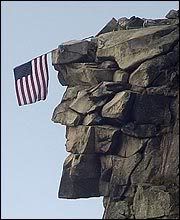
 Looking forward to the next instalment!
Looking forward to the next instalment! ? Good excuse to go to the woods anyways huh!
? Good excuse to go to the woods anyways huh!